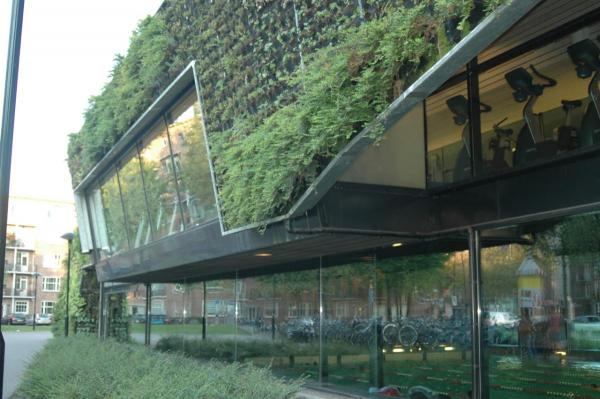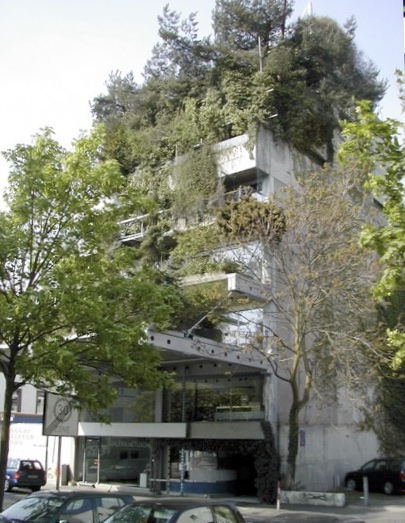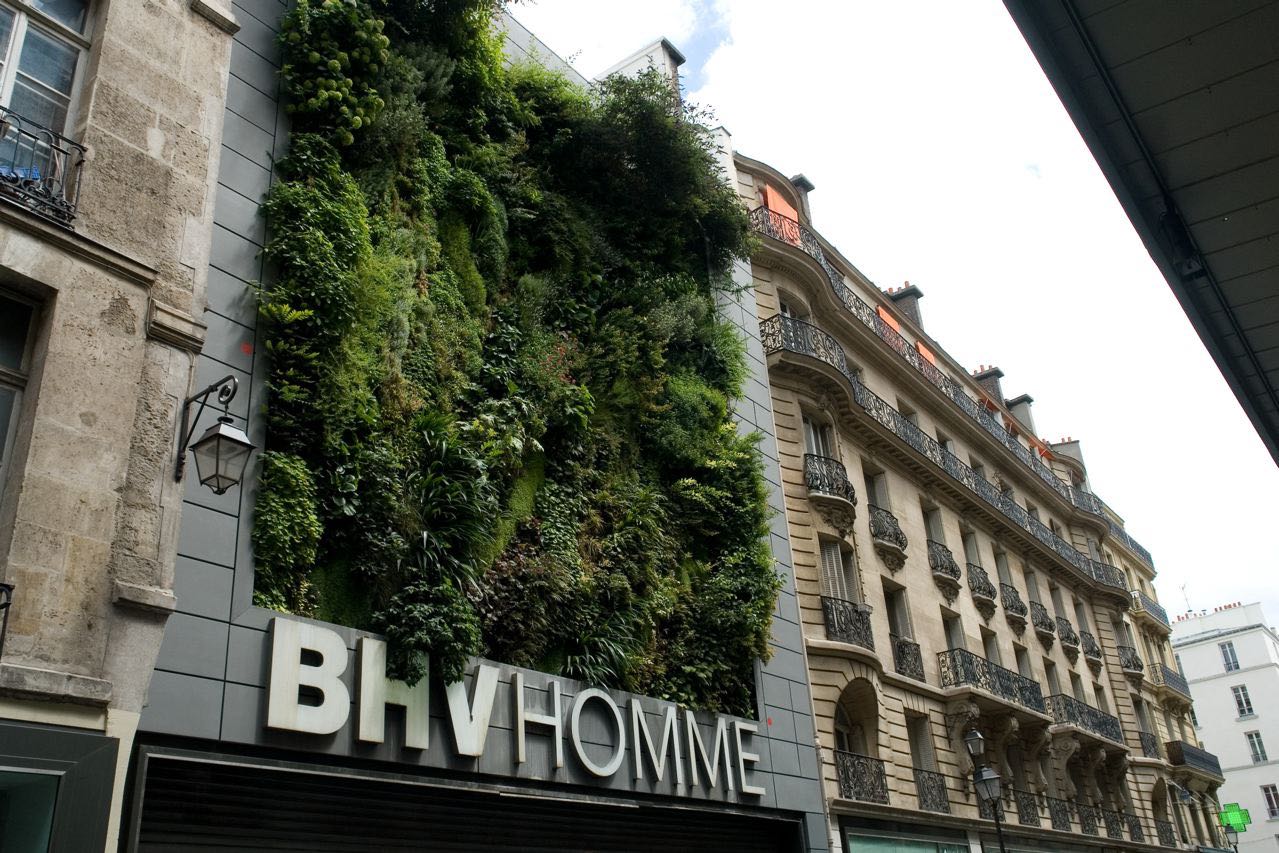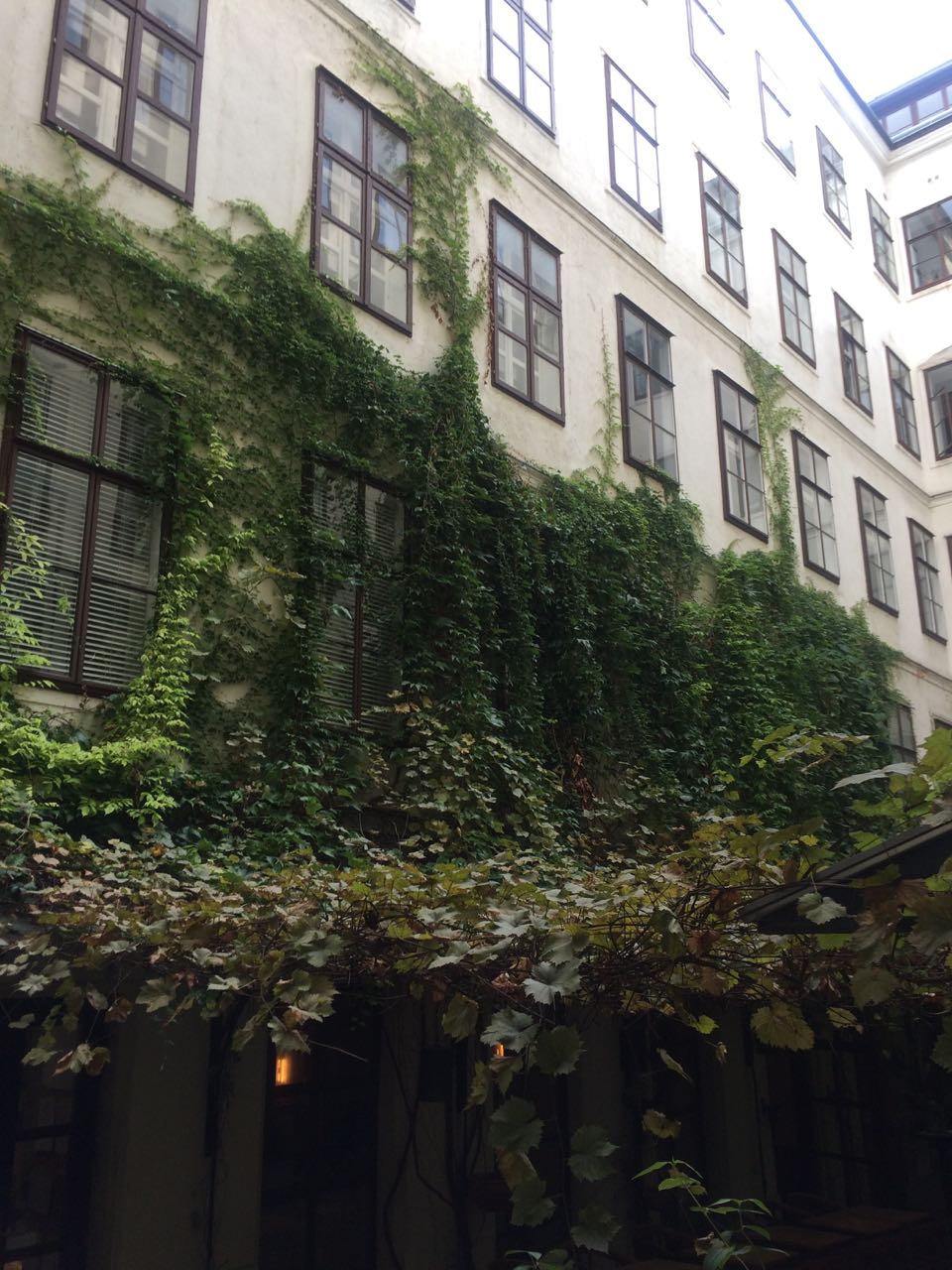
RED AS GREEN – THE CITY AS NATURE: Thoughts on an Urban Future
Helga Fassbinder
Architects and urban planners are used to thinking in terms of “red” and “green”. Red representing urban areas or the city and green representing nature and, in doing so, they have created a dichotomy.
Legislative bodies follow the same method: their plans differentiate between red and green; buildings and roads are red and green areas within the city indicate recreational areas such as parks.
Not so long ago, however, biologists put the cat amongst the pigeons. Their research results show that biodiversity is greater within cities than in the countryside – more flora and fauna in the city than outside it. The implications of this have hardly become clear to town planners. Slowly but surely the new idea that the old dichotomy no longer holds true will have to be faced. Is it not time to look at the city from the perspective of little animals or seeds, absurd as this may sound? Small animals and seeds do not use concepts as “city” and “nature”, they only see or experience another kind of nature: something like a “rocky outcrop”!
When we have accepted the interrelatedness of nature and the city we could easily ask ourselves: what do we: the plants, the small animals and organisms, and we, the two-legged kind, all need? Do we benefit by each other? And then it will become clear that we need each other desperately – the little plants, trees, insects, small birds and we people. Actually it is a familiar tale, already heard at primary school: we breathe in oxygen and exhale carbon dioxide and plants do the reverse. Insects live in and on plants and birds keep the insects in check. That is the way it has always been, but now, and this is of a more recent date, something has been added, which forces us to reexamine this relationship: climate change – global warming. As research shows, cities play a major part in this. The first signs were an increase in flooding: the recent floods have increased the awareness that the asphalt and cement surfaces of cities cannot absorb or channel water in severe rainstorms. The idea was not unfamiliar, but recent unpredictable weather conditions and torrential rains have revealed the urgency of the problem.

Is there a “natural” way in which we can contribute to alleviate these problems? Yes indeed, and here I reach an essential point: it helps if we remove the dichotomy between city and nature in our mind, and if we look at the city as a specific kind of nature. We should accept the helping hand nature holds out to us, and not to turn our backs to it.
For example: it is possible to reduce the amount of rainwater in the ground to some extent by allowing plants to absorb it. If one has removed the soil by covering it by a building it need not be such a big problem. You can simply place soil a few floors up on the roof. There it will have the same function as down below, absorb a considerable amount of water before it becomes a problem. The soil laid down on the roof has the added advantage of providing a layer of insulation against cold or heat.
The plants’ ability to retain moisture and to release oxygen by means of their leaves contributes to the improvement of the urban climate. That we know. More recently we have also learnt that the positive effect is even greater than we thought, because of another problem, namely that of fine particles pollution. Foliage purifies the air: leaves draw the impurities to themselves so to speak, and the impurities remain on the surface of the leaves until they are washed away by the rains and disappear into the ground or down the drains. This too is not an entirely new idea. At the Technical University of Berlin they have been doing research in this field and have estimated that the effects of air pollution especially the fine particle pollution can be reduced by as much as a third by the introduction by means of a green cover of the city. It is only when one thinks about the application of this theory to an actual city, that one sees that it could be problematic, not to say a source of conflict, especially to specialists in professions such as architects and town planners. Cities would then suddenly look very different. The city would then become, and I exaggerate a little, a green landscape with many deep, green ravines. Not only would the roofs be green, but also the front walls or facades of the buildings. Positive effects do not only result from green roofs that can only be seen from the air, but also from green walls. Vertical greenery has virtually the same effects on the environment and can even contribute to insulation, depending on how it is placed.
If you think about it rationally, providing nearly all buildings with a green cover would seem the obvious thing to do. Actually, we should be surprised that we did not start it long ago – the green city, an efficient means to combat both the problems of the urban environment and the problems of global warming.

However, this is not in keeping with our idea of a city. The city as nature is perhaps a charming idea and acceptable if the city of today is seen as resembling a rocky landscape. But what if it will look totally different, what if it will be covered by vast amounts of greenery? Many architects’ hair will stand on end if you mention this idea. That might indeed be due to the deeply imprinted dichotomy between red and green. A whole aesthetic tradition is based on this principle. This is quite understandable for two reasons: the first was that “nature” was still seen as threatening until the end of the 18th century. Nature seemed a dominant power (just look at the relatively small human populations worldwide at that time) against which man had to defend himself. This anti-nature attitude determined the whole aesthetic value system regarding cities. That which was man-made was the very opposite of nature, as was revealed in the buildings and even in gardens: nature was tamed. Since the Age of Enlightenment this belief was accompanied by the idea that man could bring about permanent progress. In architecture this idea has reached its zenith in Modernism and its aesthetics, which is entirely devoted to rationality and technological development – “nature” has been put in a rationally encircled box in which it is kept for the purpose of recreation only.
Obviously there was another rational reason to keep nature out of buildings: in the past we did not have the necessary technical possibilities to integrate red and green smoothly. The discovery of synthetic materials and perfect synthetic foils, sealants and fillers is something of the last decades. Such advanced technical constructions have been developed since then that is now far more sensible to choose a green roof than a conventional one, as the green one will last twice as long. Furthermore there are combinations of plants which can survive even dry summers without requiring watering or electronic watering installations.
 If you want a delightful garden on your roof you can even go on a long holiday in the middle of summer without endangering its existence. We now have the possibility of an installation which electronically regulates a sprinkling system. It requires no human help and is not even expensive. This too is a technological attainment of the last two decades. And what applies for roof gardens also applies for vertical green: you can now create magnificent vertical gardens that might be little less than the famous hanging gardens of Semiramis, which were once regarded as the 8th wonder of the world. Nothing can stop roof and vertical gardens now.
If you want a delightful garden on your roof you can even go on a long holiday in the middle of summer without endangering its existence. We now have the possibility of an installation which electronically regulates a sprinkling system. It requires no human help and is not even expensive. This too is a technological attainment of the last two decades. And what applies for roof gardens also applies for vertical green: you can now create magnificent vertical gardens that might be little less than the famous hanging gardens of Semiramis, which were once regarded as the 8th wonder of the world. Nothing can stop roof and vertical gardens now.
Those engaged in the gardening trade are cautious, and, on the subject of vertical greenery, usually even dismissive. To them this is all relatively new: they have been trained in a different manner (and training has such a great influence that it can almost amount to brainwashing). Many architects also do not know what to make of it, because they are not sufficiently knowledgeable on the technical possibilities. And – this is the main point – they also still firmly adhere to theold belief that the surface of a city should simply consist of stone and glass. The city as nature? Out of the question.
And yet the first signs of a turn of the tide are visible.
Quite a lot is starting to happen with respect to green roofs: various municipalities, such as those of Basel, Linz on the Danube and Toronto, have already made green roofs compulsory for all new buildings. Other cities are demonstratively setting a good example by placing green roofs on municipal buildings – Chicago has gained admiration worldwide by doing so. Then there are cities which grant subsidies for green roofs and provide free technical advice. Antwerp uses this method to encourage owners of existing buildings to replace old roofs with new green ones.
The resistance to vertical greenery is greater, but as with all new developments, pioneers are already at work. In this area Paris is clearly ahead of other cities: In its zoning plans for the city centre it has introduced a new green category: Vertical Greenery. Small areas have been outlined where this sort of greenery has to come. A sensation! And a beginning has already been made – even very well known architects are experimenting with it. In Paris Jean Nouvel has clad the whole façade of his new museum on the Quai Branly, which faces the Seine, in vertical green provided by Patrick Blanc. It has become a magnificent vertical garden, a new tourist attraction. Patrick Blanc is above all an expert in this field – a biologist who has beendeveloping constructions and experimenting with species of plants for vertical gardens. His creations can now be seen all over the world and in France he is also well liked by the general public. Recently an exhibition of his vertical gardens was held in the building of French Energy at Paris, an exceptional location in itself. The exhibition was so well attended that visitors, people of all ages and from all levels of society, had to queue in the street in long rows.
But this indicates that the idea of a green city is more readily accepted by the general public than by architects. Nature is loved. Man longs for nature, preferably as close to home as possible and gardens on the roof or on their walls are what many people like. But what will we do about the spiders then? Even against a fear of insects there is a green remedy: an organic substance made of special kind of fern that repels insects.
To arouse greater interest in the “green city” it might be more useful to approach the inhabitants rather than the town planners and professionals in the field. The Paris municipality has obviously realized this. During the months of May and June in 2007 a big exhibition of plants, and stands with information on them, was held in front the Mairie de Paris, the city hall, in order to make the inhabitants more enthusiastic about greenery in their city. Vertical greenery was given special attention. The organizers were trying to encourage citizens to cover their front walls with plants and creepers. Free advice was given to tenants and owners, both on the technical aspects and on agreements with owners – and is still going on: there is a special office within de administration for vertical greenery. Wonderful! It is in keeping with what has been happening for quite a while now, without help or hindrance from town planners, architects and legislators. Many walls are adorned by flower boxes, wild vines, and creepers planted by inhabitants, owners and even tenants, the very many people who delight in this. You need only walk through Amsterdam with eyes wide open to see how much greenery has been nurtured by individuals – I could fill a whole book with charming examples from Amsterdam alone.

Resistance came – and comes – from the architects and town planners. But things are changing: there are heartening examples such as the Mercator swimming pool in Amsterdam, which was completed recently. Architect Ton Venhoeven provided the whole building with a green skin thereby making it truly exceptional, and a younger generation of architects is coming up with new ideas of the integration of green (plants) in buildings. French architect Edouard Francois experimented with various possibilities of façade greenery. His “Flower Tower” was discussed in nearly all prestigious trade journals. It consists of a block of flats in a suburb of Paris, each the floors/levels of which has been provided with a gallery all around to which pots of bamboo plants, closely bound together, have been fixed. All the plants are watered automatically of course. He also designed an apartment building neighborhood in Paris with a free standing wall of plants which screens the entire narrow, high façade of it. The climate change and the ever warmer summers create the need for shade, thereby making these projects more relevant than ever.
The Modernist slogan of ‚light, air and sun‘ will have to adapte to the changed living conditions of our time !
Photos: Helga Fassbinder
